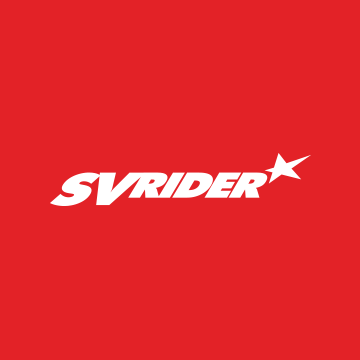Here's some build details from my 2012 Dirtbag Challenge bike.
First a little back story. My first DBC bike was a VF700 Interceptor. http://www.customfighters.com/forums/showthread.php?t=51062 It was a fun project and got me hooked on doing another DBC bike, but it wasn't a bike I wanted to keep. In 2010 there were several 2-stroke entries and I was inspired to do a 2-stroke for my second DBC bike. The biggest hurdle was finding what I wanted within budget though. Running RD250s, 350s, and 400s were going for well over $1000, and much more than that if they were nice. I kept my eyes open and eventually ended up with a several bikes and also enough spare parts to assemble an almost complete RD400. So I built an RD400 donor bike from the spare parts and sold off the RD250 and 350 I had found. (kept another 90% complete RD400 that I found for $200)
I had originally planned this build for 2011 DBC, but a week in the hospital during the build window didn't allow that to happen. In the two years form 2010 DBC till 2012, I accumulated maybe 50 pages or so of hand sketches of what I wanted to build. I'd bring a sketch book with me everyday and draw while riding the train to work. The DBC rules allow for 30 day build time, but you can do all the planning, drawing, CAD, etc. that you want ahead of time. When the "go" date was announced, I had everything accurately engineered in SolidWorks and ready to start fabricating. I didn't spend a single minute deciding "oh, what should I build?". I also kept track of all my expenses on a spread sheet and selected only parts that would keep me within budget. Many of the parts on the bike were donated, or left over from other projects that had payed for
themselves.
I'll start with some of the early sketches and CAD images.
(by the way, there are photos in chopper discussion area and many more online of the final bike for those who want to jump ahead)
I wanted to do something unique with the front suspension, so started sketching variations on a leading-link design with linkage connecting to high-mounted shocks...
![Image]()
I even considered doing a custom trellis frame, but eventually decided that would be too much to accomplish in 30 days...
![Image]()
![Image]()
then from sketches to CAD (Solidworks)
![Image]()
![Image]()
![Image]()
First a little back story. My first DBC bike was a VF700 Interceptor. http://www.customfighters.com/forums/showthread.php?t=51062 It was a fun project and got me hooked on doing another DBC bike, but it wasn't a bike I wanted to keep. In 2010 there were several 2-stroke entries and I was inspired to do a 2-stroke for my second DBC bike. The biggest hurdle was finding what I wanted within budget though. Running RD250s, 350s, and 400s were going for well over $1000, and much more than that if they were nice. I kept my eyes open and eventually ended up with a several bikes and also enough spare parts to assemble an almost complete RD400. So I built an RD400 donor bike from the spare parts and sold off the RD250 and 350 I had found. (kept another 90% complete RD400 that I found for $200)
I had originally planned this build for 2011 DBC, but a week in the hospital during the build window didn't allow that to happen. In the two years form 2010 DBC till 2012, I accumulated maybe 50 pages or so of hand sketches of what I wanted to build. I'd bring a sketch book with me everyday and draw while riding the train to work. The DBC rules allow for 30 day build time, but you can do all the planning, drawing, CAD, etc. that you want ahead of time. When the "go" date was announced, I had everything accurately engineered in SolidWorks and ready to start fabricating. I didn't spend a single minute deciding "oh, what should I build?". I also kept track of all my expenses on a spread sheet and selected only parts that would keep me within budget. Many of the parts on the bike were donated, or left over from other projects that had payed for
themselves.
I'll start with some of the early sketches and CAD images.
(by the way, there are photos in chopper discussion area and many more online of the final bike for those who want to jump ahead)
I wanted to do something unique with the front suspension, so started sketching variations on a leading-link design with linkage connecting to high-mounted shocks...

I even considered doing a custom trellis frame, but eventually decided that would be too much to accomplish in 30 days...


then from sketches to CAD (Solidworks)











































